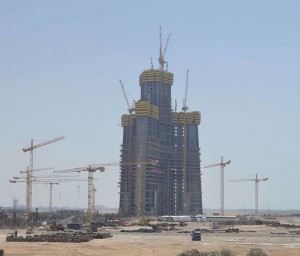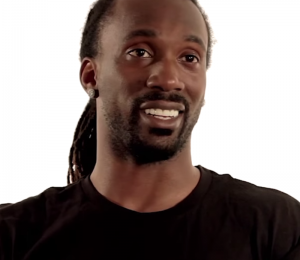A few days ago I was reading about the plans that are underway for the ‘Jeddah Tower’ in Jeddah, Saudi Arabia. At 3307 feet, it will be a gateway to Mecca and the tallest building in the world. It will also be a testament to the might and prosperity of the Arabian Gulf. For its Arab proponents, such a tower heralds the arrival of a new and powerful civilization. New York’s Empire State Building was constructed in 1931 to mark the arrival of the United States upon the international commercial scene. Shanghai’s 2008 World Financial Center welcomed the People’s Republic onto that same scene. And Dubai’s 2010 Burj Khalifa hailed the ascendancy of the United Arab Emirates as a new hub of global capitalism.
The Jeddah Tower, March 2016, by Eric893, Wikimedia Commons, https://creativecommons.org/licenses/by-sa/4.0/deed.en
In one sense these great buildings are fitting testaments to the might of civilizations. But in another sense they are testaments to human folly. A long time ago, the people of Rhodes, Greece, constructed a massive statue. They called it the Colossus of Rhodes, and it became one of the Seven Wonders of the Ancient World. We have no eyewitness accounts of it, and no other records of ancient statues that attempted to copy its massive form. But the writer Philo of Byzantium tells us that its size was vast – a bronze figure over 110 feet high. The writer Pliny (1st century AD) tells us that its fingers were bigger than most other statues. The purpose of the Colossus was to thank Rhodes’ patron deity, the sun god Helios, for rescuing the city in 305 BC from the siege of Demetrius ‘Poliorcetes,’ the ruler of Syria. The statue’s architect, Chares, cast the figure in sections over a 12 year period, beginning with the feet and continuing upwards through the legs and the torso. Unfortunately the Colossus lasted only 56 years. It was finished in 282 BC but collapsed in an earthquake in 226 BC.[1]
The Apostle, in 1 Peter 1:24-25, seems to have been referencing all such follies when he tells us that “All men are like grass, and all their glory is like the flowers of the field; the grass withers and the flowers fall, but the word of the Lord endures forever.” Monumental buildings, like ancient statues are just another, modern expression of human arrogance. What really ought to count for us as signs of human progress? Much more impressive kinds of signs are higher literacy rates, reduced poverty percentages, and meaningful political inclusion for the disadvantaged. This is because the true greatness of a nation does not lie in its physical might. It lies in the way it treats its weakest members – its poor, its unborn, its animals, and its elderly.
Back in 1818, the great British poet Percy Shelley wrote the striking sonnet ‘Ozymandias’ to describe the Jeddah Tower, the Colossus of Rhodes, and all such testaments to human folly.
I met a traveler from an antique land
Who said: “Two vast and trunkless legs of stone
Stand in the desert. Near them, on the sand,
Half sunk, a shattered visage lies, whose frown,
And wrinkled lip, and sneer of cold command,
Tell that its sculptor well those passions read
Which yet survive, stamped on these lifeless things,
The hand that mocked them and the heart that fed:
And on the pedestal these words appear:
‘My name is Ozymandias, king of kings:
Look on my works, ye Mighty, and despair!
Nothing beside remains. Round the decay
Of that colossal wreck, boundless and bare
The lone and level sands stretch far away.”
[1] (Source: The Seventy Wonders of the Ancient World, edited by Chris Scarre, Thames & Hudson, London, 1999, pp. 42-44)





